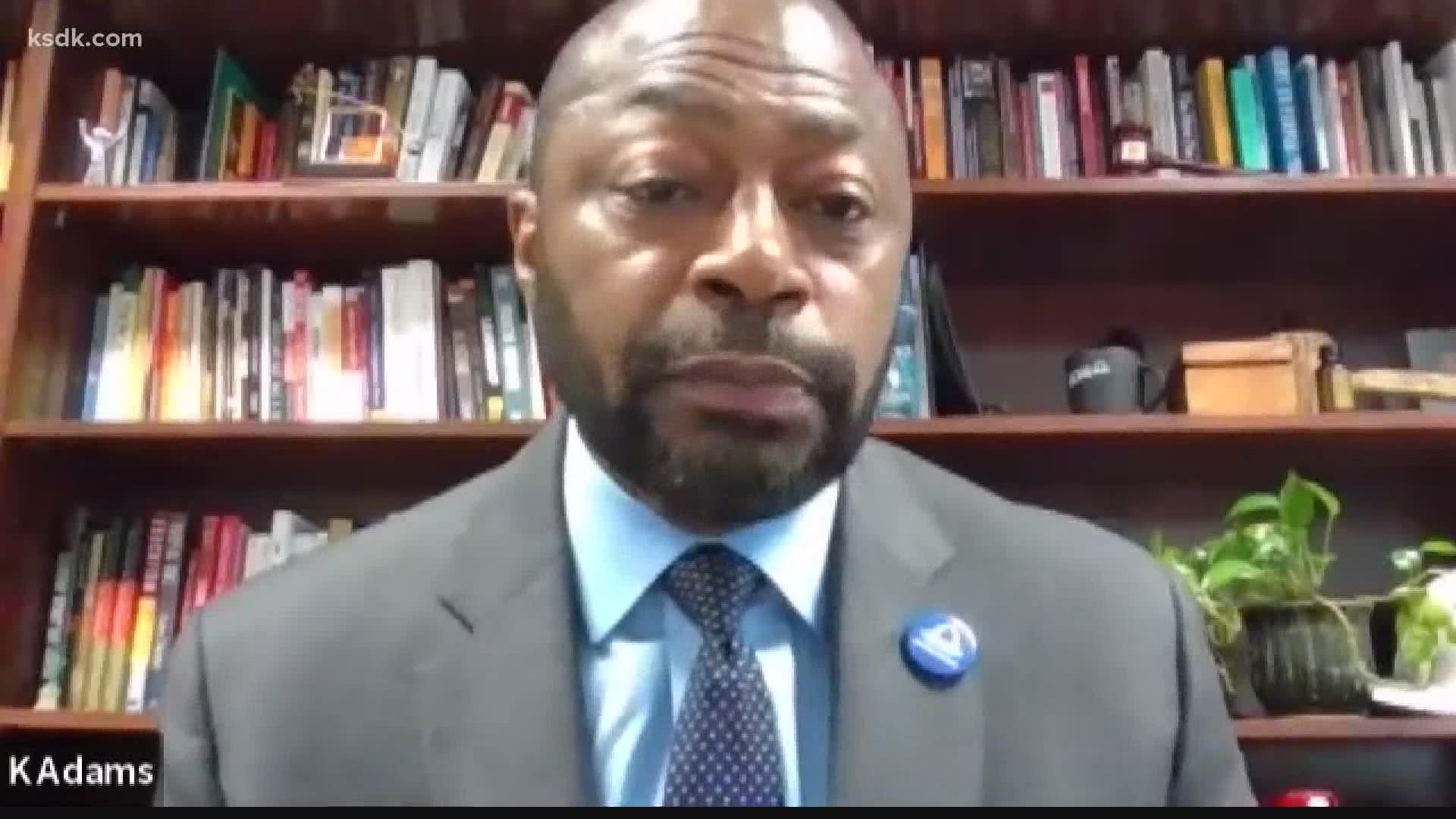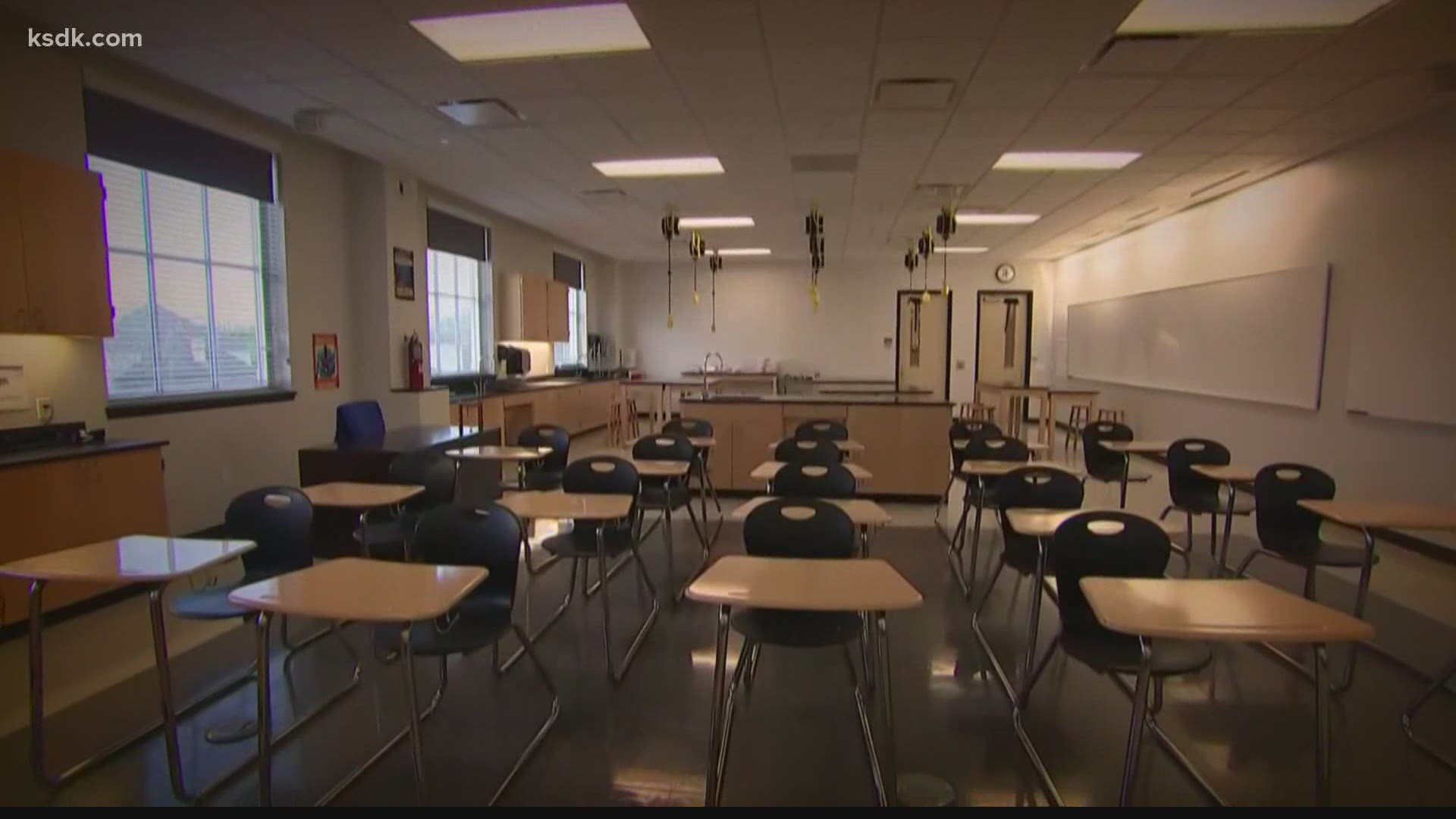ST. LOUIS — "I realized a long time ago that I'm not going to make everyone happy," St. Louis Public Schools Superintendent Kelvin Adams said. "The group I want to work the hardest to make happy are the kids."
As school districts around the country work to create and implement back-to-school plans amidst a pandemic, Adams said there are clear and unique challenges facing districts, like SLPS, where a large portion of the families are minorities and living in poverty.
"It is amazing to me the kind of emails I get," Adams said. "It speaks to this notion of privilege and how people frame this privilege. Some people have the ability to stay home and work from home and provide support to their children, or they have the technology. A large portion of our families don't, and that population is mainly black and brown."
The district has 21,862 students from Pre-K to 12th grade. Eighty percent of those students are Black. Sixteen percent of students are considered to be homeless, and 100% of students qualify for free or reduced lunch.
As the district prepares to provide the technology and resources to educate students through a global pandemic, leaders continue to face the often-crippling issue they were challenged with before COVID-19: poverty.
According to the data from the U.S. Census, the median household income and per capita income in the City of St. Louis are substantially lower, often less than half, than places like Chesterfield, Eureka and Ladue where public districts are facing the same challenges to prepare to go back to school.
There is also about a 20% gap between St. Louis and those cities when looking at the percentage of households with internet access and a large percentage gap when looking at households with adults who graduated from college.
What this tells district leaders is that many of the families in SLPS do not have the access, education or resources to support students on their own. Many parents are also essential workers or do not have the option to be at home with their students.
Earlier in the summer, the district released a survey asking families what they would want school to look like in the fall. Early on, the results showed that 67% of families wanted in-person learning, even as concerns about COVID-19 continued to grow. That percentage dropped to 50% a few weeks later.
On July 30, when the survey closed, 79% of families had participated and 33% selected in-person learning as their preference. While the percentage of families opting for in-person learning dropped with time, Adams said the fact that a third of families still want to send their children to school shows something he's always known existed: need.
He said he's heard it all from parents.
"'I need to work,'" Adams said, quoting parents he'd heard from. "'I'm concerned my students are missing social and emotional connections with other students.' 'My students are already behind.'"
Adams said national data shows SLPS students, on average, fell behind by two years because of the instructional time they missed because of the pandemic last school year. He said the data shows the average student fell behind four months in reading and six months behind in math.
However, while these realities are adding to the difficulty of an already-difficult task, they aren't new for a district that had to set up dozens of distribution centers once schools were closed to provide thousands of meals to families because thousands of students wouldn't have food otherwise.
Adams said they're doing what they've always done. They're rising to the occasion to meet the need.
Last week, after reviewing COVID-19 data and feedback from families and experts, Adams recommended an all-virtual start to the school year. He also announced the first day of school would move from Aug. 24 to Aug. 31.
He said his greatest concern is for the students going into their senior year. Days before making his recommendation for an all-virtual return, Adams said he was concerned about how that reality would impact students who relied on resources in the building for their post-high school plans.
"It's a major concern," Adams said. "It's not a minor concern; it's a major concern. If we have to 100% virtual, that's a major, major concern for us because we know that those kids will not get connected to universities to take tests, to get tutoring and to fill out applications. At every one of our high schools, we have a college counselor dedicated to helping kids get to the next place. Not having that college counselor there for them puts them behind the eight-ball. It really does."
To address this and other concerns, Adams' plan includes in-person centers for students who hands-on support for their learning. A spokesperson for the district said it will not be like traditional schooling but more like virtual learning in a set building, with social distancing practices in place and staff on hand to help where they're needed.
The district, with help from outside funding and partners, purchased $5 million worth of technology to provide for the many families who don't have tablets, laptops and Internet access. Adams said the district already has enough of the tablets it will provide to pre-K through 8th-grade students. The district is anticipating its order of Dell laptops, for high school students, to arrive the second week in August. He said the biggest challenge of getting the technology was simply that districts across the country were in need of the same resources.
The next challenge for the district, once they have the technology, will be getting it to families. They already see the impact that COVID-19 is having on families as they work to collect the technology the district gave out in the spring.
"We had 10 families call us yesterday to say they can't bring the technology to us because all 10 families have someone with COVID-19, and they can't go anywhere," Adams said. "Those are just some of the challenges that we address in our community. We're a high African-American population, and this virus seems to be addressing that population at a higher degree. That's some just some of the issues around poverty."
Adams said the district is working with Uber to close the transportation gap so every family that needs the technology will get it. He said he thinks the plan will offer options for communities that wouldn't have them otherwise.
The district also receives help from many of its community partners like the Wesley House Association, where staff partnered with Ashland Elementary School and distributed tablets, headphones and hot spots to dozens of North St. Louis families so they can teach summer enrichment programs to students.
Charlene Williams, youth program coordinator at Wesley House, said the organization was able to provide the items to students for free, so when they go back to school they won't need to request them from SLPS.
"We could not make it in this community without the philanthropic community, similar to Wesley House," Adams said.
As the first day of what will be a very different school year looms just weeks away, Adams said the safety for staff and students remain at the center of the district's focus as well as the pressure to not let the pandemic dampen students' chances to succeed.
It's a heavy burden, one strained by the socioeconomic disparities that already existed. He said he hopes what we're seeing now encourages the community to continue to work to heal the gap that exists in the city, even after there's a cure for the virus.


